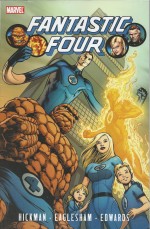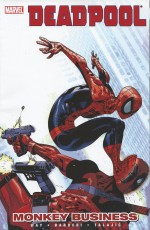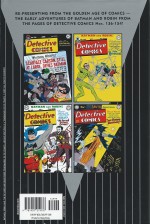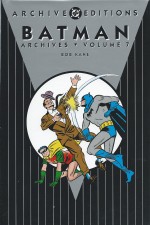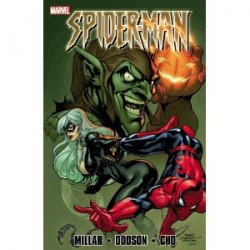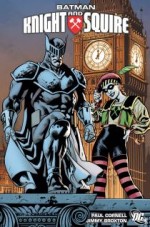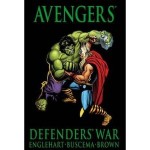
By Goscinny & Uderzo, translated by Anthea Bell & Derek Hockridge (Brockhampton/Knight Books)
ISBN: 0-340-20285-8
This is another one purely for driven nostalgics, consumed collectors and historical aficionados, highlighting the marvellous variety of formats and methods used to elevate and disseminate brilliant comics from the gutters of prejudice by turning them into proper books…
One of the most-read series in the world, the collected chronicles of Asterix the Gaul have been translated into more than 100 languages since his debut in 1959, with animated and live-action movies, TV series, assorted games, toys and even a theme park outside Paris (Parc Astérix, if you’re planning a trip…) spinning off from his hilarious exploits.
More than 325 million copies of 34 Asterix books have sold worldwide, making his joint creators France’s bestselling international authors. The diminutive, doughty hero was created as the transformative 1960s began by two of the art-form’s greatest masters, René Goscinny & Albert Uderzo, and even though their perfect partnership ended in 1977 the creative wonderment still continues – albeit at a slightly reduced rate of rapidity.
When Pilote launched in 1959 Asterix was a massive hit from the very start. At first Uderzo continued working with Charlier on Michel Tanguy, (Les Aventures de Tanguy et Laverdure), but soon after the first epic escapade was collected as Astérix le gaulois in 1961 it became clear that the series would demand most of his time – especially as the incredible Goscinny never seemed to require rest or run out of ideas (after the writer’s death the publication rate dropped from two books per year to one volume every three to five).
By 1967 the strip occupied all Uderzo’s attention. In 1974 the partners formed Idéfix Studios to fully exploit their inimitable creation and when Goscinny passed away three years later Uderzo had to be convinced to continue the adventures as writer and artist, producing a further ten volumes thereafter.
Like all great literary classics the premise works on two levels: for younger readers as an action-packed comedic romp of sneaky, bullying baddies always getting their just deserts and as a pun-filled, sly and witty satire for older, wiser heads, enhanced here by the brilliantly light touch of master translators Anthea Bell & Derek Hockridge who played no small part in making the indomitable Gaul so very palatable to the English tongue. (Me, I still admire a divinely delivered “Paff!†to the snoot as much as any painfully potent pun or dry cutting jibe…)
The feature debuted in Pilote #1 (29th October 1959, with the first page actually appearing a week earlier in a promotional issue #0, June 1st 1959). The stories were set on the tip of Uderzo’s beloved Brittany coast where a small village of redoubtable warriors and their families resisted every effort of the all-conquering Roman Empire to complete their conquest of Gaul. Alternately and alternatively the tales took the heroes anywhere in the Ancient World, circa 50BC, as the Gallic Gentlemen wandered the fantastic lands of the Empire and beyond…
Unable to defeat or even contain these Horatian hold-outs, the Empire resorted to a desperate policy of containment with the seaside hamlet perpetually hemmed in by the heavily fortified garrisons of Totorum, Aquarium, Laudanum and Compendium.
The Gauls don’t care: they daily defy the world’s greatest military machine simply by going about their everyday affairs, protected by the magic potion of resident druid Getafix and the shrewd wits of the rather diminutive dynamo and his simplistic, supercharged best friend…
Firmly established as a global brand and premium French export by the mid-1960s, their gradual rise to prominence this side of the pond was tentative but as unstoppable as Obelix’s pursuit of roast boar or Roman playmates…
The translated albums are available in a wealth of differing formats and earlier editions going all the way back to the first 1969 Brockhampton editions (still readily available from a variety of retail and internet vendors – or even your local charity shop and jumble sale).
Asterix and the Roman Agent premiered in 1970 in Pilote #531-552, simultaneously making the jump to a French album and English translated editions in 1972 – from when this delightful digest-sized (212 x 150mm), kid-friendly collectors’ item originates, and highlighted homeland insecurity as Caesar, under attack by the Roman Senate over the indomitable, unconquerable Gauls, deploys his greatest weapon: a double-edged sword named Tortuous Convolvulus, whose every word and gesture seems to stir ill-feeling and conflict in all who meet him.
Where Force of Arms has failed the wily despot hopes this living weapon of mass of dissension might forever fracture the Gauls’ unshakable comradeship and solidarity with a dose of Roman entente dis-cordiale…
On the crossing, just two minutes with the conniving Convolvulus has a sworn brotherhood of pirates at each other’s throats, and even while discussing the plan with Aquarium’s commander Felix Platypus, the agent’s unique gift sows discord and violence, so when he finally enters the village it’s not long before the high-spirited and fractious Gauls are at war with each other…
The women are cattily sniping at each other, the traders are trading blows and even Asterix and Obelix are on the outs. But that’s not the worst of it: somehow the idea has gotten around that their sharp little champion has sold out to the Romans…
With discord rife, the Romans soon have the secret of the magic potion too – or do they? The cunningly ingenious Convolvulus hasn’t reckoned on two things: the sheer dimness of Imperial troops and the invaluable power of true friendship, leaving Asterix and Obelix a way to overcome their differences, turn the tables and once more save the day.
At last, the agent provocateur is forced to realise that sometimes one can be too smart for one’s own good…
Brittle, barbed and devilishly sharp, this yarn was reputedly based on lingering ill-feeling following an internal power-struggle at Pilote which almost cost editor Goscinny his job. The original title for the tale was La Zizanie – “The Ill-feeling†or “The Dissensionâ€. Seen through the lens of forty years of distance, however, all that can be seen now is stinging, clever, witty observational comedy and magnificently engaging adventure, and surely that’s what matters most?
Asterix sagas are always stuffed with captivating historical titbits, soupcons of healthy cynicism, singularly surreal situations and amazingly addictive action, illustrated in a magically enticing manner. These are perfect comics that everyone should read over and over again.
Surely you don’t disagree?
Text © 1970 Dargaud Editeur. English language text Text © Hodder & Stoughton, Ltd.




